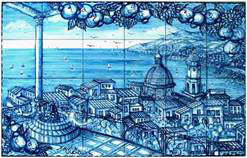Speaker
Dr
Dik C. van Gent
(Erasmus MC)
Description
The effects of low and protracted doses of ionizing radiation on humans are only partially understood. The shape of the dose response curve at low and protracted doses cannot be measured accurately using standard epidemiological methods. However, this information is needed for rationale policy decisions for setting exposure limits. Therefore, we set out to determine a gene expression signature that operates at low and intermediate doses using a panel of DNA double strand break repair deficient mouse models.
We developed mouse models that lacked one or both of the major DNA double strand break repair pathways (nonhomologous end-joining and homologous recombination) and compared transcriptional responses in these DNA repair deficient mice with normal mice before and after irradiation with a relatively low dose of gamma radiation (200 mGy). Importantly, the changes in gene expression patterns were nearly identical in repair-deficient mice and in irradiated mice. We identified a gene expression signature that was very similar, but considerably more pronounced (up to 5-fold) in irradiated DNA repair deficient mice compared to normal mice, showing that the transcriptional responses are indeed caused by the DNA damage inflicted by radiation and that DNA repair deficient mice can be used as the proverbial ‘canary in the coalmine’ in the context of low dose radiation research. The identified gene expression signature includes Gadd45a, Gad45b, MDM2, BAG3, and CDKN1A (p21) and in addition allowed the identification of additional genes by correlation analysis. A distinct set of genes was consistently upregulated after low dose IR, but this did not change with DSB repair defects, suggesting that this part of the transcriptional responses is caused by other triggers than DSBs.
We conclude that this transcriptional response can be used as a very sensitive read out for low levels of radiation exposure. This will be meaningful, as several genes from this signature have functions in known pathways that regulate cell proliferation and/or senescence and apoptosis, which are all relevant for carcinogenesis and (tissue) aging. This consistent gene expression signature defines a universal marker profile relevant for the general population, providing valuable tools for biomarkers, mechanistic understanding, prevention and therapy.
Primary authors
Dr
Dik C. van Gent
(Erasmus MC)
Dr
Jeroen Essers
(Erasmus MC)
Dr
Ricardo Leite
(Erasmus MC)
Prof.
Roland Kanaar
(Erasmus MC)
Co-authors
Dr
George Garinis
(Erasmus MC)
Dr
Marjolein Sutmuller
(Nuclear Research and consultancy Group, Petten)
Ms
Paula van Heijningen
(Erasmus MC)
Mrs
Sigrid Swagemakers
(Erasmus MC)

